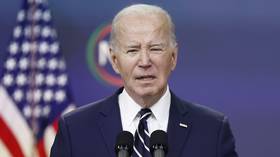US-China investments are almost DOUBLE what the official figures show, report reveals
Total investments between the US and China are nearly twice as large as official numbers indicate, totaling $3.3 trillion in 2020, despite escalating tensions between the world’s two largest economies, a new study has found.
The estimates were presented by New York-based research provider Rhodium Group. According to its report, published on the National Committee on US-China Relations website, around two-thirds of the total two-way capital flows were controlled by Chinese investors. They held $700 billion in equity and $1.4 trillion in debt securities issued by US entities at the end of 2020. This is around 40 percent more than what the official US data suggests.
Also on rt.com China’s century: Yuan to dethrone US dollar as major global currency, trend forecaster tells Max KeiserMeanwhile, American investors held a total of $1.2 trillion, with $1.1 trillion in equity and $100 billion in debt, issued by Chinese entities. Rhodium Group notes that this is about five times the holdings captured in official figures.
The researchers explain that the staggering difference between the figures is due to the complex, multi-modal structures that are often used for cross-border investment. This makes it hard for statistical agencies to determine the nationalities of securities, issuers and owners.
For example, Chinese companies can use “complex legal structures to issue shares out of tax havens” that trade on the US markets. The US holdings are subsequently attributed to those tax havens instead of to China in the official data, the report notes. Some capital flows are also misclassified in official sources “due to investor efforts to circumvent Beijing’s capital controls or the use of Hong Kong as an investment intermediary.”
Given that financial integration between the world’s two largest economies is relatively “low in the global context,” their bilateral investment portfolio has a “potential for trillions of dollars in additional flows,” according to the report. Cross-border investment could nearly triple from the estimated $3.3 trillion to $9 trillion if policy was changed. However, additional trillions-strong investment would be possible only under “normal conditions,” but policy headwinds can impede growth.
The Donald Trump administration was determined to restrict American investment into Chinese companies that Washington claims support China’s military. Dozens of firms, including telecom and energy majors, were added to the investment blacklist, and it is unclear if the new US administration wants to reverse its stance on China.
“Measures have proliferated on both sides which, if current trends persist, could greatly diminish growth prospects,” the report concludes.
For more stories on economy & finance visit RT's business section














